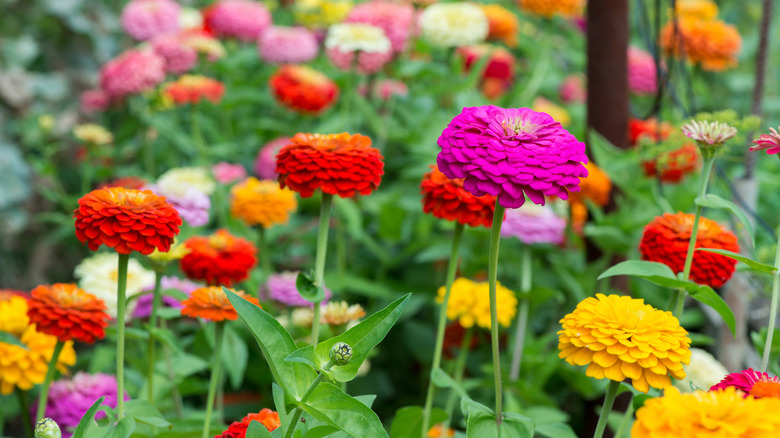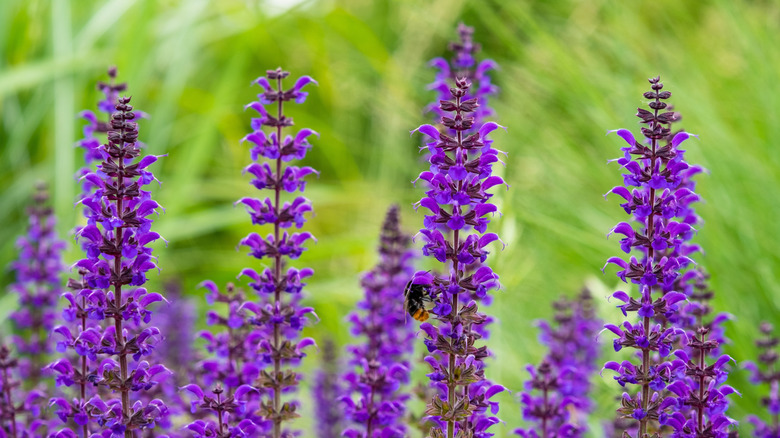One Of The Best Zinnia Companion Plants Is A Hummingbird And Pollinator Magnet
Zinnias are beloved by gardeners and pollinators alike. They're not only beautiful flowers that bloom from summer to the beginning of winter, they're also incredibly easy to grow across the United States (zones 2a through 11b). If you're wondering if there is anything you can do to make these pollinator magnets even more powerful, there is! Plant your zinnias next to some salvia plants and watch as all the neighborhood's hummingbirds and butterflies come for a feast. Together, these two plants are sure to bring all the pollinators to your yard.
Companion planting can greatly benefit your garden. It means grouping plants together so they can coexist and even help each other. Companion plants typically enjoy similar conditions, and they can sometimes help each other by deterring pests, loosening soil, or even providing shade. In the case of salvia and zinnias, both plants have similar soil, water, and sun needs and can therefore thrive in close proximity. On top of that, they actually power up each other's pollinator attractiveness. When paired up, no pollinator will be able to resist that corner of your garden.
But be careful, while all zinnias love direct sunlight, some salvia species like it more than others. Therefore, you need to pay close attention to sunlight requirements when choosing a salvia plant as your zinnia's new next-door neighbor.
How to grow zinnias and salvia next to each other
Salvia refers to a family of plants that's also known as sage. And there isn't just one salvia plant for you choose from; in fact, there are over 900 species. Gardeners tend to love salvias because of their strong and distinct smell, their beautiful tubular flowers, and of course, their ability to attract pollinators. From the salvia family, consider the species like the Salvia farinacea or Salvia nemorosa (also known as woodland sage). These come in beautiful shades of pink, white, purple, and even blue and coexist well with zinnias.
Plant zinnias and salvia seeds outside towards the middle or end of spring. What's most important is that there are no chances of frost coming back, so May or June are good times to get started based on your local weather. Both flowers love well-drained soil and compost, so you can plant them directly in the ground or in raised garden beds. To choose a spot, what matters most is that you place them in an area of your garden where they're sure to get lots of direct sun. Once planted, keep the soil moist but not overly wet by watering them two or three times a week and letting the soil dry in between.
Once both of the plants start to flower, you'll start to see bees, butterflies, and hummingbirds flocking to your yard. Hang a hummingbird feeder nearby if you'd like to attract even more pollinators, or plant flowering perennials around your garden to turn your garden into a hummingbird oasis year after year.

